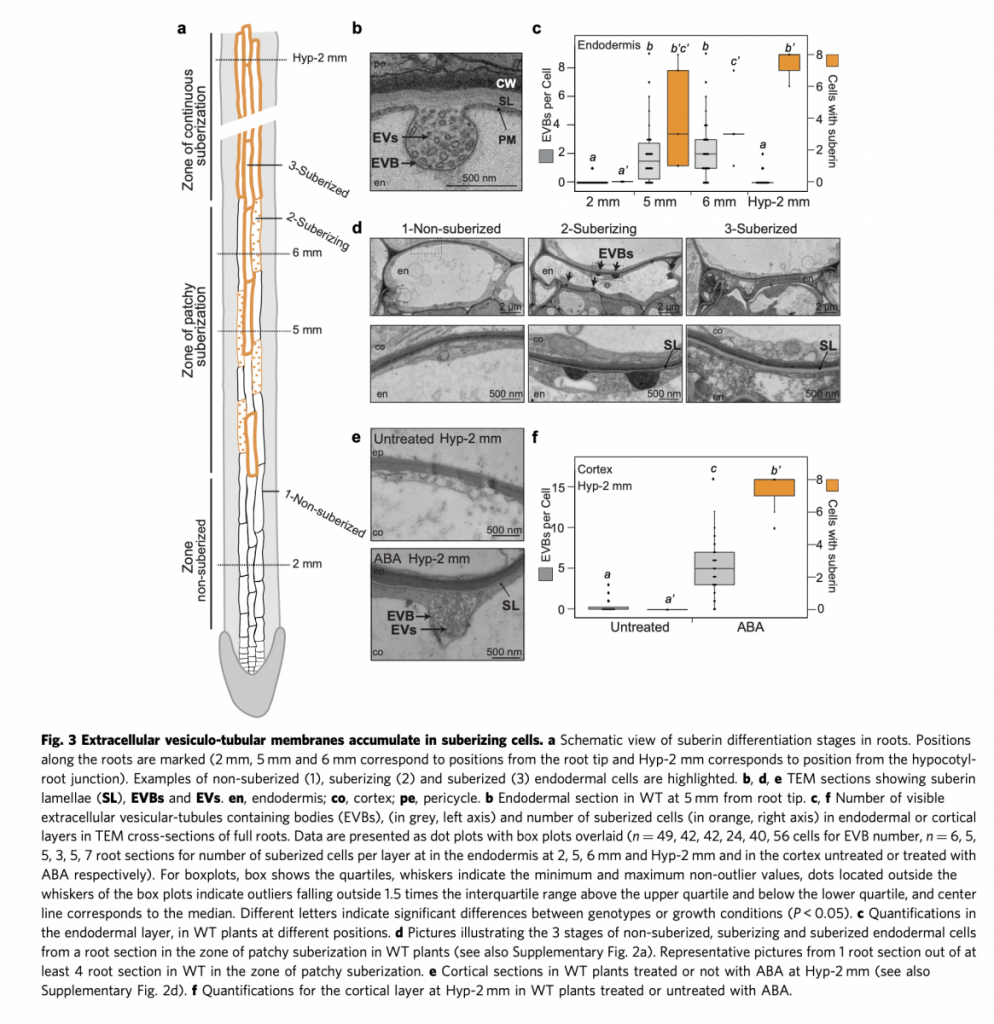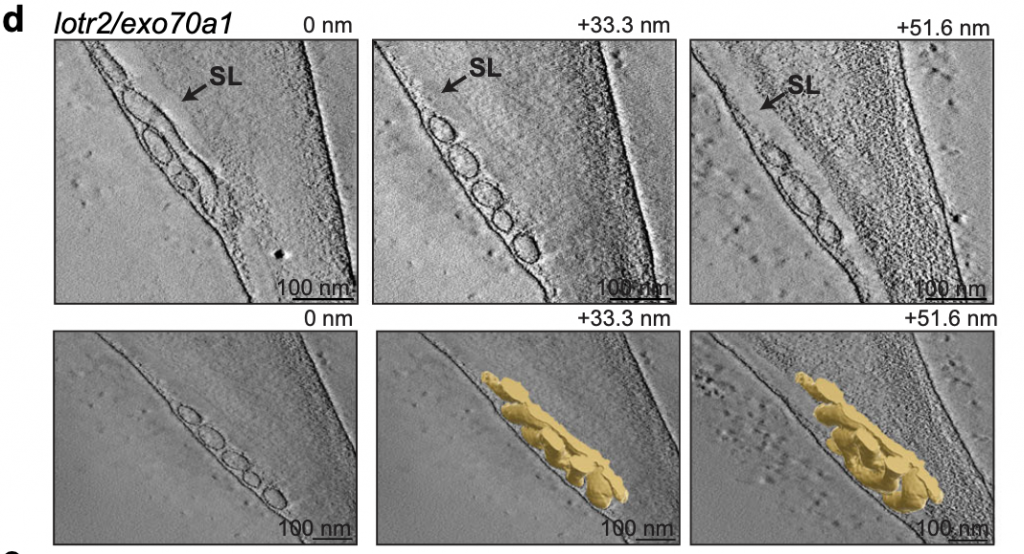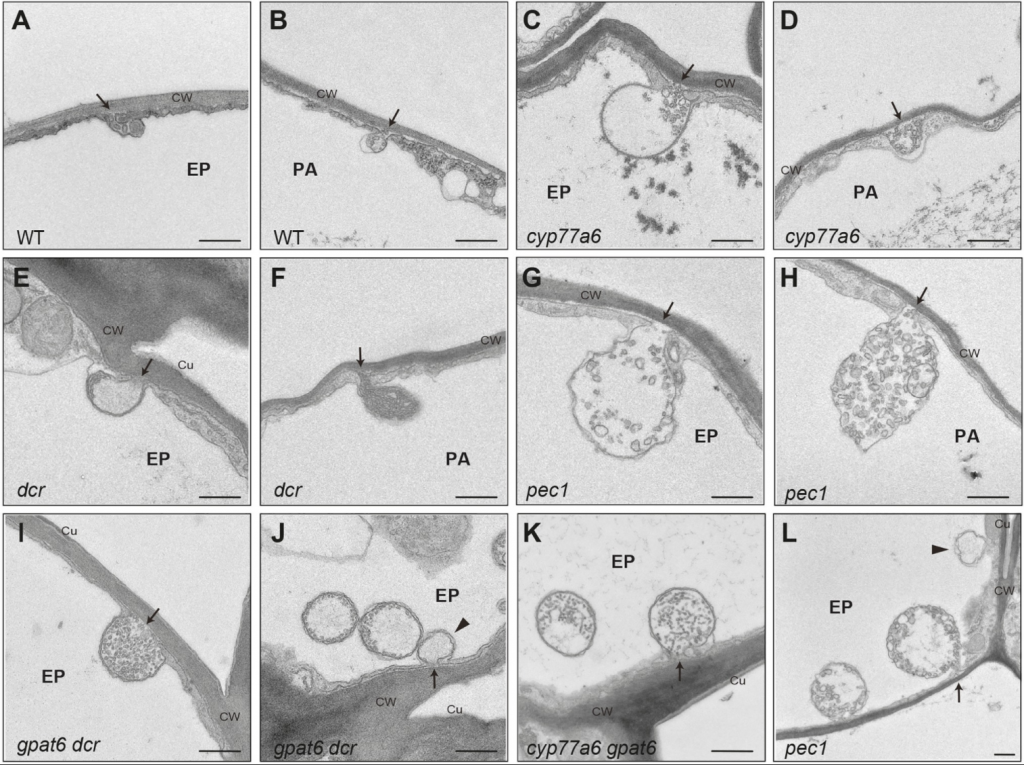Great collaboration with Marie Barberon and Niko Geldner! Our article on Extracellular vesiculo-tubular structures associated with suberin deposition in plant cell walls is now published in NatureComms.
Extracellular vesiculo-tubular structures associated with suberin deposition in plant cell walls
Damien De Bellis, Lothar Kalmbach, Peter Marhavy, Jean Daraspe, Niko Geldner & Marie Barberon
Nat Commun 13, 1489 (2022). https://doi.org/10.1038/s41467-022-29110-0
Suberin is a fundamental plant biopolymer, found in protective tissues, such as seed coats, exodermis and endodermis of roots. Suberin is deposited in most suberizing cells in the form of lamellae just outside of the plasma membrane, below the primary cell wall. How mono- meric suberin precursors, thought to be synthesized at the endoplasmic reticulum, are transported outside of the cell, for polymerization into suberin lamellae has remained obscure. Using electron-microscopy, we observed large numbers of extracellular vesiculo- tubular structures (EVs) to accumulate specifically in suberizing cells, in both chemically and cryo-fixed samples. EV presence correlates perfectly with root suberization and we could block suberin deposition and vesicle accumulation by affecting early, as well as late steps in the secretory pathway. Whereas many previous reports have described EVs in the context of biotic interactions, our results suggest a developmental role for extracellular vesicles in the formation of a major cell wall polymer.



